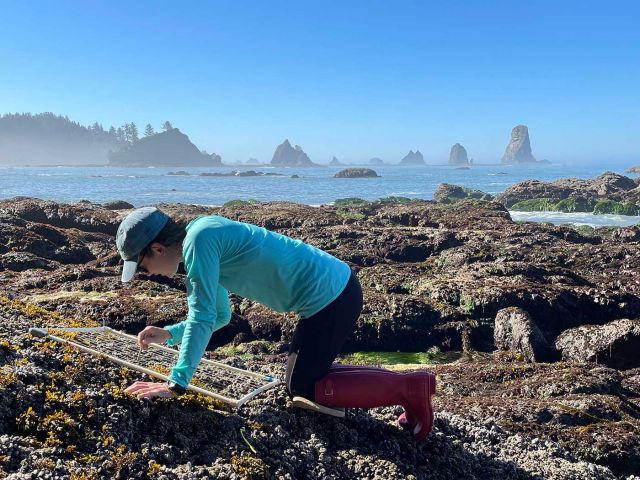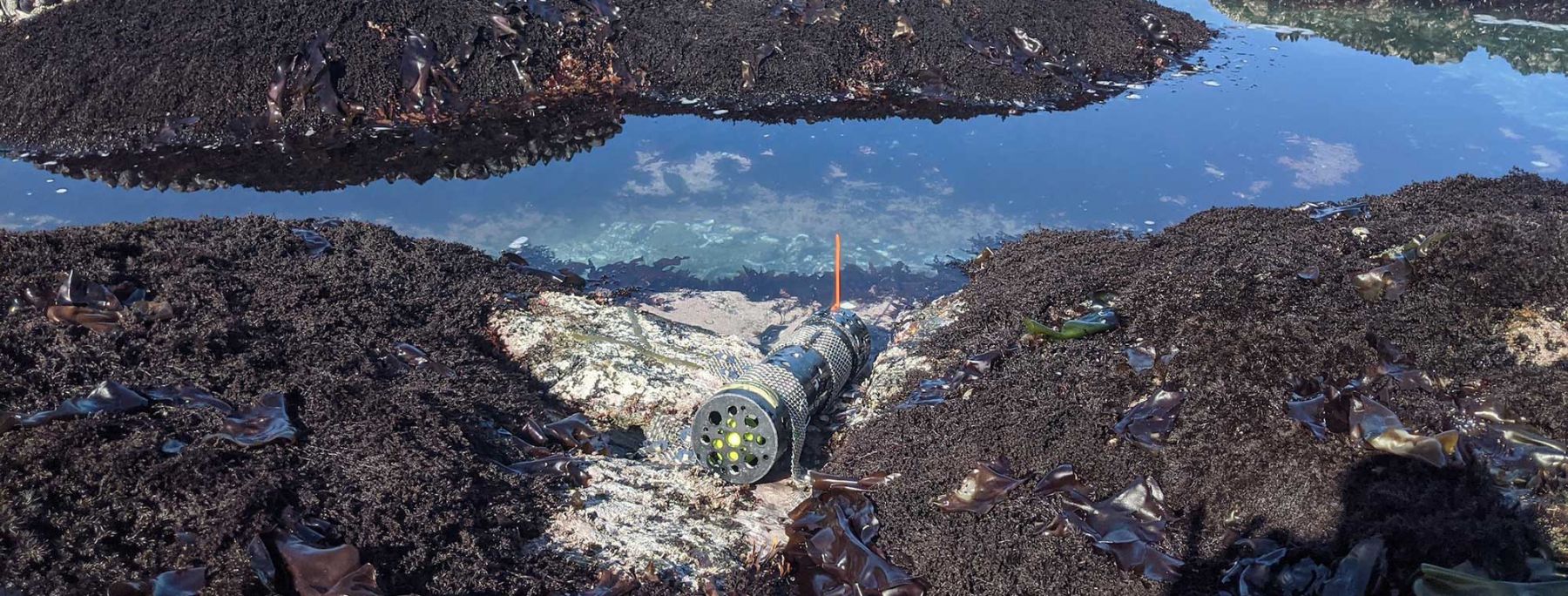Overview
The lab has worked in the OA research space to advance our understanding of changes in ocean chemistry, how key marine invertebrates might respond to such changes, with the goal to illuminate the ecological vulnerability and resilience of coastal marine ecosystems. This research has included monitoring efforts in the Antarctic and at study sites in coastal California and the US West coast. On the monitoring side, our work is now integrated into the Santa Barbara Coastal LTER (SBC LTER) and the data are archived in the SBC LTER database. We continue to explore OA as a progressive stressor, especially in coastal California and in the Southern Ocean.

Research Highlight
The most recent work in the lab is being conducted by Amelia Ritger. Amelia is studying how ocean acidification mosaics may be interacting with variable predator communities to affect intertidal species across the California Current Large Marine Ecosystem. She deployed sensors in the intertidal zone at three sites across California to measure pH and temperature, and is tracking how Tegula funebralis (the black turban snail) populations may be responding to variable pH conditions and predator communities across their range. This research fills an important data gap in our understanding of intertidal OA along the California coastline.
Affiliated Researchers
Selected Publications
Kapsenberg, L., A.L. Kelley, E. C. Shaw, T.R. Martz and G.E. Hofmann (2015) Seasonal pH variability in near-shore Antarctica in the present and future. Scientific Reports 5, Article number: 9638.
F Chan, JA Barth, CA Blanchette, RH Byrne, F Chavez, O Cheriton, ... (2017) Persistent spatial structuring of coastal ocean acidification in the California Current System. Scientific Reports 7 (1), 1-7
Hofmann, G.E., T.R. Martz, et al. (2011) High-frequency dynamics of ocean pH: a multi-ecosystem comparison. PLoS ONE 6(12): e2898 doi:10.1371/journal.pone.0028983.
